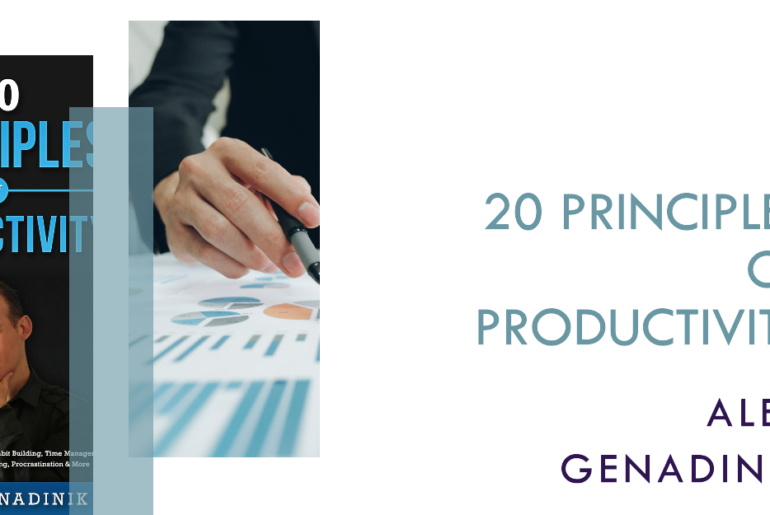There was a time when I took pride in multitasking. Writing a blog but also doing keyword research along it, cooking but also responding to my best friend’s gossip, texting while engaging in a conversation with someone, and many such instances are there that I can count. But when I saw that I am suffering and not even able to complete a single task well, then I realized what was actually wrong with me. Nothing got the power of my full attention, because my attention was divided. In order to excel in time management, I struggled with my attention management. I was diverted by the flow of my own thoughts and activities, because of which I was making careless mistakes. An attempt to do many things at once means not a particular thing is done well. Multitasking accomplishes the opposite of what I think it does, resulting in things getting done halfway, half-heartedly, in me feeling anxious.
We are juggling multiple responsibilities in an era dominated by distractions. And that’s the reason why people tend to (or are forced to) multitask more, rather than adhere to a single task completion.
However, it’s essential to explore both terms to better understand the trade-offs between monotasking and multitasking. And this blog is all about that.
The Monotasking Advantage
Monotasking is all about focusing on one task at a time. It requires concentration and discipline without any disturbances and interruptions.
In a world overflowing with distractions, monotasking champions the art of deep focus and singular attention. By dedicating our energy to one task at a time, we can achieve a sense of immersion and flow. Monotasking allows us to fully engage with the present moment and unleash our true potential. Consider the joy of savoring a book without interruption or tackling a complex project with unwavering concentration.
Imagine sitting down to write a heartfelt blog dedicated to someone, embracing every word, and pouring your emotions onto the screen. By focusing solely on this task, you can create a heartfelt message that resonates deeply, which cannot be done by multitasking.
There is a possibility that you may not want to continue doing that particular task for a longer time period. That’s when taking breaks becomes necessary. You can try the Pomodoro technique. But make sure to finish one task before moving on to another.
The Multitasking Myth
Most of the time multitasking is an illusion. You think you are multitasking, but in reality, you are actually wasting time switching from one task to another.
Bosco Tjan
We often believe multitaskers to be smarter and more productive, as they can do multiple tasks for the same period of time. However, research suggests that our brains can not handle multiple tasks at once efficiently. Instead, our attention becomes fragmented. This leads to decreased productivity and reduced quality of work. In fact, some researchers suggest that multitasking can actually reduce productivity by as much as 40%.
While it may seem alluring to respond to emails while attending a meeting or scrolling through social media while working on a report, the illusion of multitasking can hinder our ability to perform at our best. This can also lead to the occurrence of multiple errors while doing any work.
Let’s suppose you’re trying to concentrate on writing a report, but notifications from various messaging apps keep popping up on your phone. Each time you stop to check and respond to these notifications, you disrupt your workflow and introduce the possibility of errors in your writing.
Finding the Right Balance
Rather than dwelling in the realm of absolutes, finding a balance between monotasking and multitasking is the key. Certain tasks require our focused attention, while others may benefit from a more flexible approach. For example, while writing or coding, monotasking is more recommended but while brushing your teeth, you might think of so many other things in your mind.
Recognizing the needs of each task and aligning our efforts accordingly allows us to optimize our productivity. It also helps to maintain a sense of equilibrium.
For instance, let’s say you’re working on a complex presentation. Start by monotasking. Devote uninterrupted time to research and outline the content. Once the groundwork is laid, now is the time to tackle smaller tasks like gathering visuals or editing slides. Even if you are multitasking this time, it won’t be a problem for you as you have already done the major work.
Conclusion
In the perpetual battle of monotasking vs. multitasking, both approaches have their merits as well as demerits. Embracing monotasking grants us the ability to immerse ourselves fully in the task at hand, fostering a sense of focus and accomplishment. On the other hand, we can harness multitasking effectively for simpler or complementary activities. By finding the delicate balance between these two strategies, we can navigate the demands of our modern lives with intention and purpose.
Ultimately, whether we choose to embrace monotasking or multitasking, it’s up to us. It is vital to cultivate mindfulness and self-awareness in our approach to work and life, doesn’t matter whether we are multitasking or not. What we need to understand is the unique demands of each task. Then adapting our focus accordingly empowers us to achieve a harmonious blend of productivity and engagement.
Discover more from Talking Concept
Subscribe to get the latest posts sent to your email.




